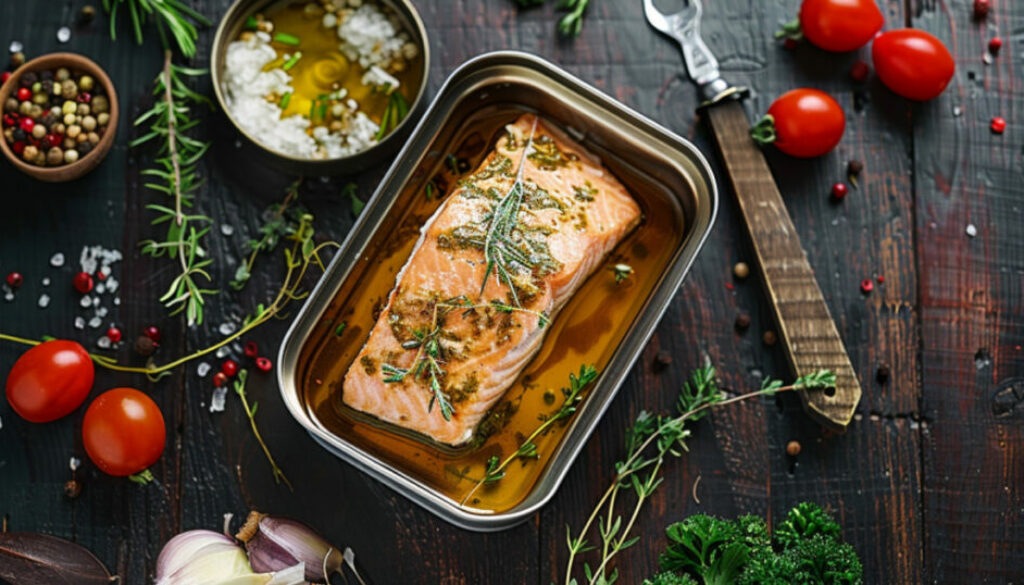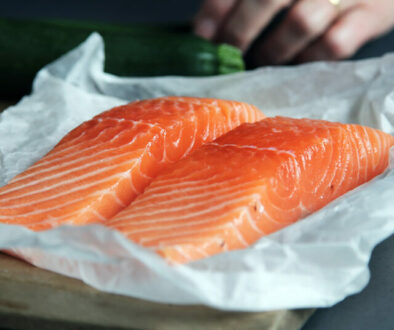Should You Drain Canned Salmon Before Eating It?
Want to get more healthy fish in your diet, but don’t have hours to cook? Canned salmon to the rescue! It’s packed with protein, omega-3s, and other good stuff. But before you start eating, there’s the big question: should you drain canned salmon?
Sometimes the liquid inside the can is a bit salty, especially if the salmon is packed in brine. Draining the liquid helps you reduce the amount of salt you eat, which is important for your health. But does draining the liquid also mean losing some of those healthy fish oils? Let’s find out!
Should You Drain Canned Salmon?
The answer to drain or not drain your canned salmon is a resounding probably. Salmon packed in water should normally be drained as the water does not impart much flavor, and can be high in sodium. For salmon packed in oil, there is usually an excess of oil for most recipes, so it can be drained off. There are some other factors to consider that we should go over though.
Reasons To Drain Canned Salmon
There are a few good reasons to drain canned salmon before using it. First, canned salmon (especially the kind in salty water) can have a lot of sodium. If you’re watching your salt intake, draining the liquid is an easy way to manage how much extra salt you’re eating.
As mentioned previously, you will almost always drain water packed salmon for recipes. It is just salty filler.
Particularly with oil packed salmon, some people just don’t like the tastes or smells. Plus for most uses, you don’t need all that extra oil.
Reasons To Keep The Liquid
If you are using oil-packed salmon, my preference, then you may want to not immediately dump all the oil it is packed in, down the drain. It can be handy to hang on to a bit of it as you are making your recipe in case it is coming out a little dry. This is especially true for things like salmon cakes and the like.

Should You Wash Your Canned Salmon?
In most cases you do not need to wash your canned salmon. If your oil-packed salmon has a particularly strong ‘fishy’ smell, then you can rinse it to help remove some of the oil, but in most cases, washing or rinsing your canned salmon is not required.
Let Your Recipe Dictate To Drain Or Not
The best answer on whether to drain your canned salmon or not might best depend on what recipe you’re making!
If you’re adding your salmon to a salad, draining makes sense. But if you’re making salmon patties, that extra moisture from the liquid can come in handy. If your salmon is packed in oil, you may want to pour off the excess and reserve it until you are done combining ingredients, just in case!
Quality Matters: Less Smell, Better Taste
If one of the reasons you want to drain and rinse your canned salmon is that you’re turned off by a strong “fishy” smell, upgrading to a higher-quality brand could make a big difference. Cheaper canned salmon often uses less desirable parts of the fish or may not process the fish as quickly, which can sometimes lead to a stronger, less pleasant odor.
Higher-quality brands tend to be more selective about the cuts of salmon they use. They often focus on specific salmon species known for their milder flavor and delicate texture. Additionally, better-quality salmon is usually processed more carefully, which helps preserve its freshness and reduces any off-putting smells.
While higher-quality canned salmon might cost a little more, the improved taste and reduced fishy smell often make it a worthwhile investment, especially if you’re sensitive to strong seafood aromas.
Conclusion
Whether you drain canned salmon or keep the liquid is up to you! It comes down to your taste preferences and what’s most important for your health. If you need to watch your sodium, draining (and maybe even rinsing) is a smart choice. If you want the most possible nutrients, keeping those juices is the way to go.
The best part? There’s no wrong answer! Experiment a little and see what works best for you and the recipes you enjoy.



